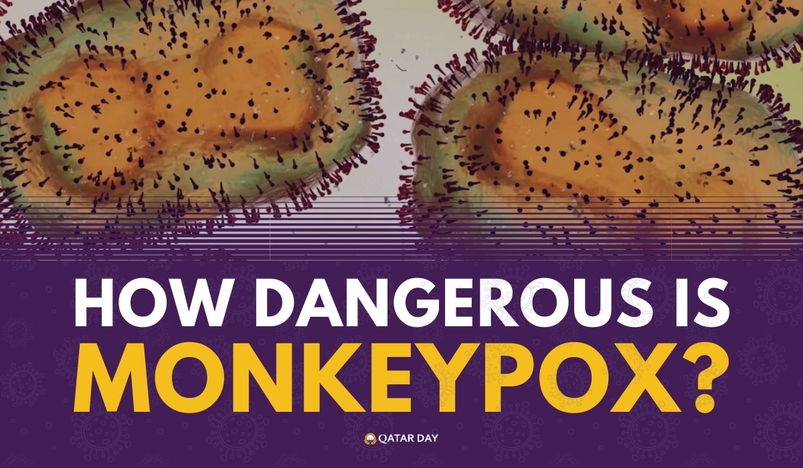
Monkeypox is a viral zoonotic disease that belongs to the same family of viruses as smallpox. Although less severe than smallpox, monkeypox has gained attention due to its increasing number of cases worldwide.
This article explores what monkeypox is, how dangerous it can be, the symptoms it causes, its similarities and differences with smallpox, and essential preventive measures.
Monkeypox is caused by the monkeypox virus, a member of the Orthopoxvirus genus. It was first discovered in 1958 when outbreaks occurred in colonies of monkeys used for research, hence the name. The first human case was recorded in 1970 in the Democratic Republic of Congo. While the disease was initially confined to central and western Africa, recent outbreaks have spread to non-endemic regions, raising global concerns.
Monkeypox is generally considered a self-limiting disease, meaning most people recover without needing treatment. However, the severity can vary based on the individual's health condition, age, and the virus strain. There are two known strains:
The West African strain, which is less severe, with a fatality rate of around 1%.
The Central African strain, which is more virulent and has a higher fatality rate, up to 10%.
While monkeypox is not as contagious as diseases like COVID-19, it can spread through close contact with an infected person or animal. The disease can also be transmitted through contact with contaminated materials, such as clothing or bedding.
The symptoms of monkeypox usually appear within 5 to 21 days after exposure and can last 2 to 4 weeks. The disease typically begins with flu-like symptoms, followed by the characteristic rash. Common symptoms include:
Rash that often begins on the face and spreads to other parts of the body, forming lesions that go through various stages, including scabs before falling off.
The rash is a hallmark of monkeypox and may resemble chickenpox or smallpox, but with some key differences discussed below.
Since both monkeypox and smallpox belong to the same family of viruses, they share several similarities, but there are important distinctions.
Rash: Both diseases cause a rash that goes through several stages, from macules to scabs.
Transmission: Close contact with infected individuals or contaminated objects can spread both viruses.
Symptoms: Fever, headache, and muscle aches are common symptoms for both infections.
Severity: Smallpox is far more severe than monkeypox. Smallpox had a mortality rate of about 30%, whereas the West African strain of monkeypox has a much lower fatality rate.
Lymph Node Swelling: One of the key distinguishing features of monkeypox is the presence of swollen lymph nodes, which is not a common symptom of smallpox.
Availability of Vaccines: Smallpox was eradicated through a global vaccination campaign, and while the smallpox vaccine offers some protection against monkeypox, it is not widely available.
Preventing the spread of monkeypox involves several measures:
Avoid Contact with Infected Individuals: The most straightforward way to avoid monkeypox is to stay away from people or animals infected with the virus.
Use Protective Equipment: Healthcare workers and caregivers should wear personal protective equipment (PPE) when dealing with suspected or confirmed cases.
Practice Good Hygiene: Frequent handwashing with soap and water or using alcohol-based hand sanitizers can help prevent transmission.
Avoid Contact with Contaminated Materials: Clothing, bedding, and other materials used by infected individuals should be handled with care.
Vaccination: While there is no specific monkeypox vaccine, the smallpox vaccine provides some cross-protection. In certain cases, vaccines are available for those at high risk of exposure.
While monkeypox is less severe than smallpox, it still poses a significant public health risk, particularly in regions where it is not endemic.
By understanding the symptoms, transmission methods, and preventive measures, individuals can help reduce the spread of the virus. Public awareness and prompt action can help control outbreaks and protect vulnerable populations from severe consequences.
.jpg)
Qatar Secures Place Among the World's Top 10 Wealthiest Nations
.jpg)
Hamad International Airport Witnesses Record Increase in Passenger Traffic

Saudi Arabia: Any visa holder can now perform Umrah

What are Qatar's Labour Laws on Annual Leave?
Leave a comment